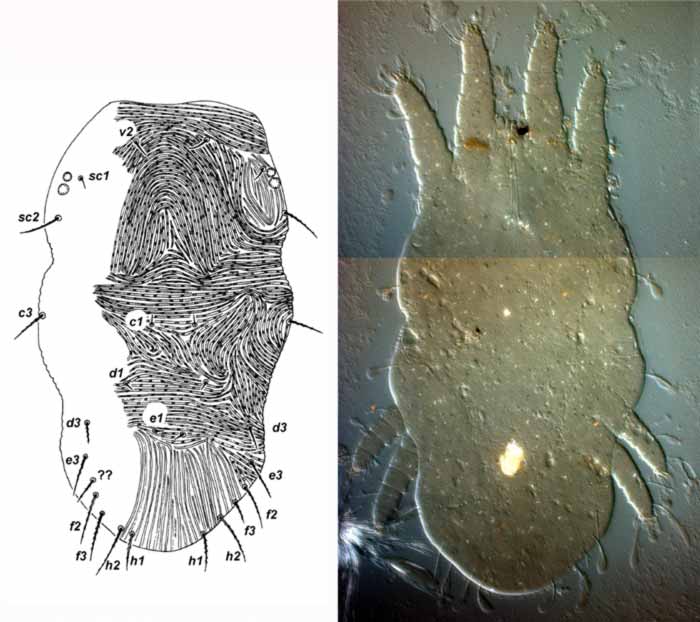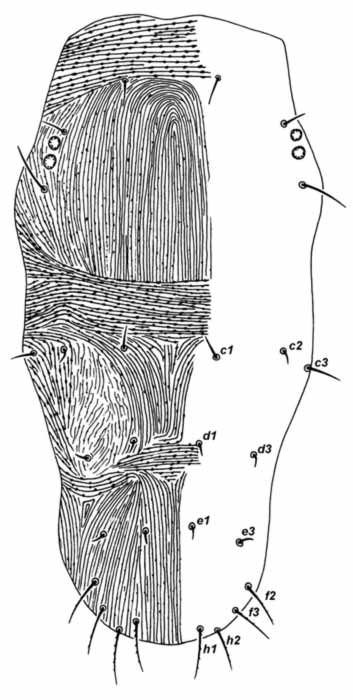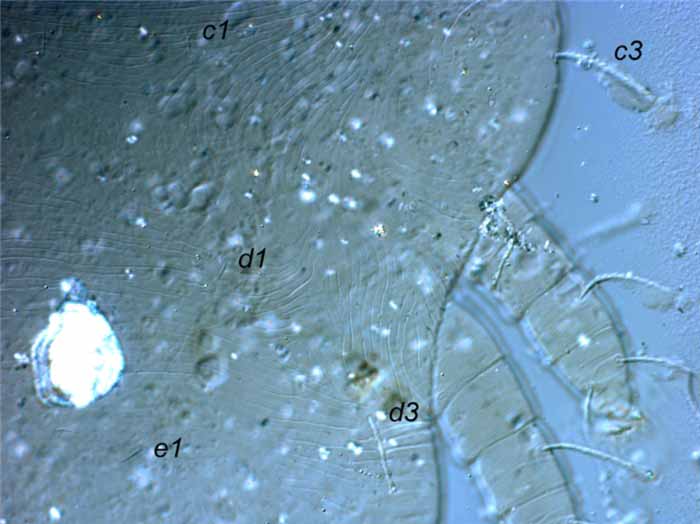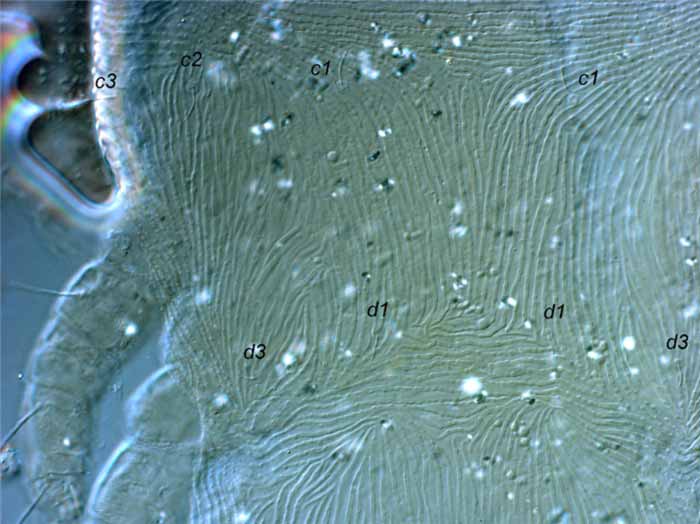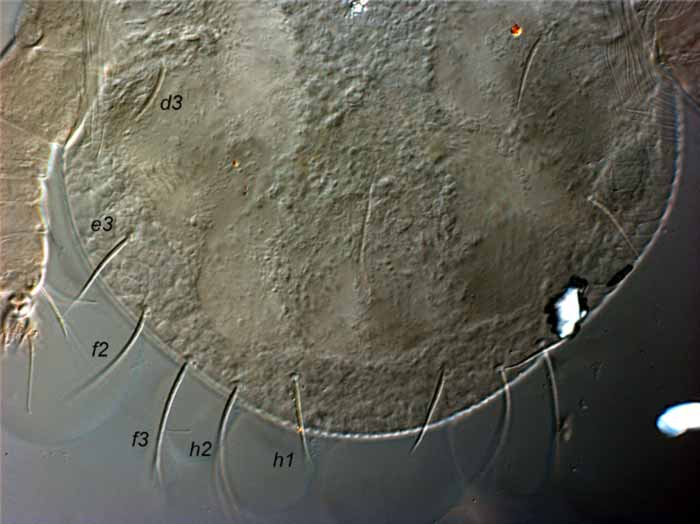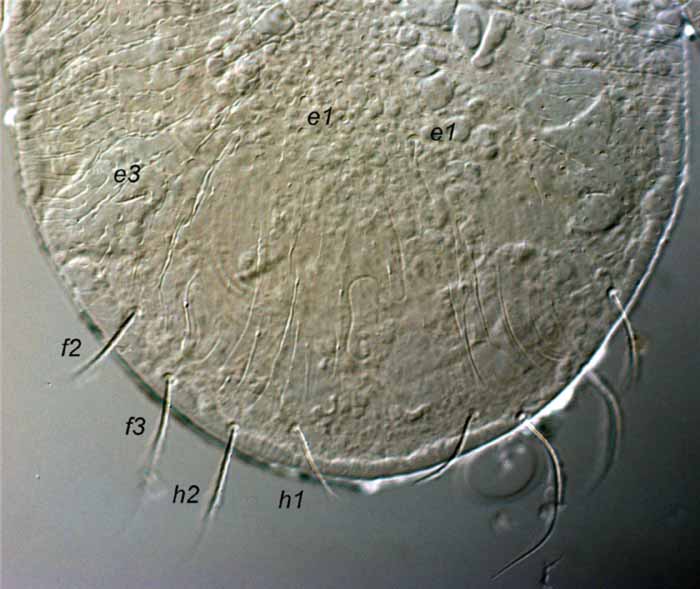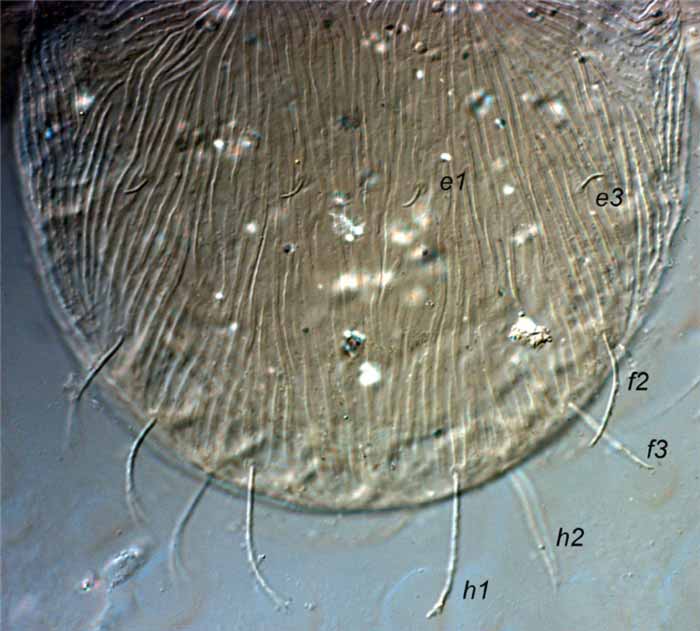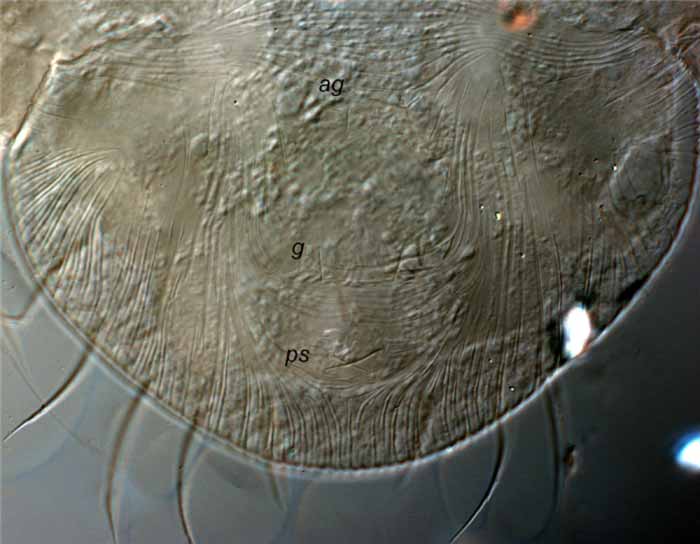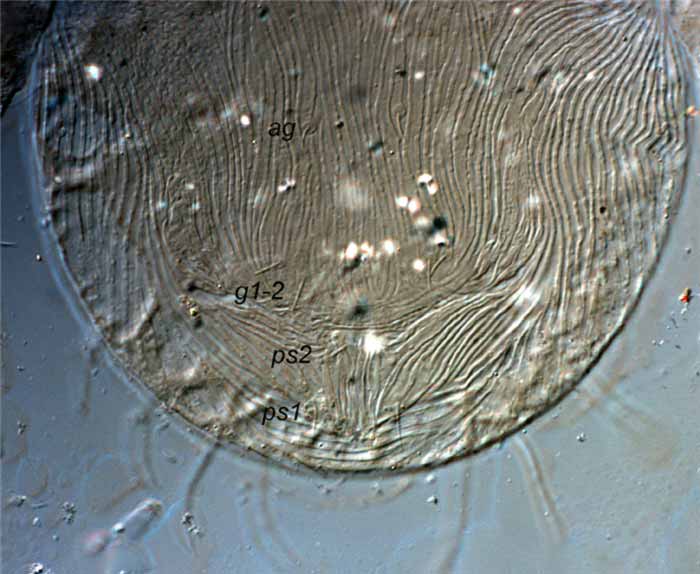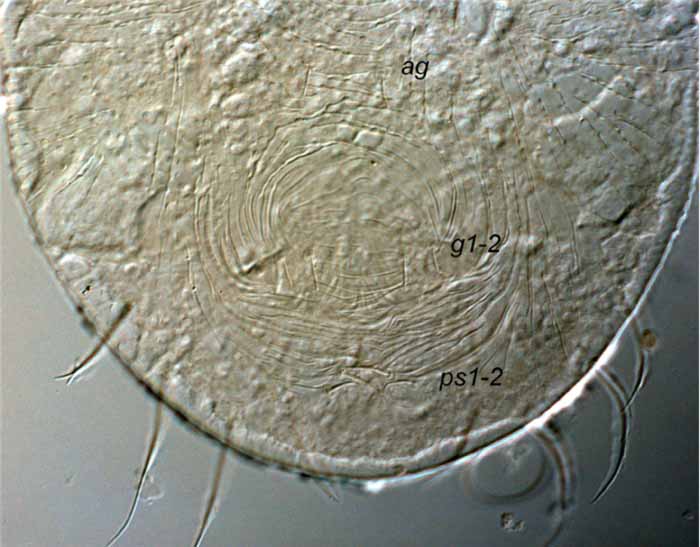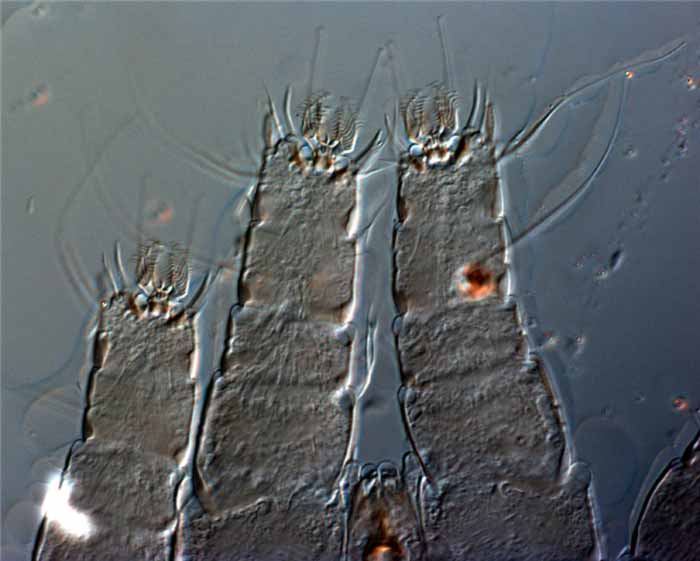Afronychus
|
Fig. 1. Afronychus amnicus female dorsum (?? indicates possible presence of e2) (paratype). |
|
Fig. 2. Afronychus mulibrinus female dorsum, indicating c2 present. |
|
Fig. 3. Afronychus amnicus female anterior dorsal opisthosoma, indicating c2 absent (holotype). |
|
Fig. 4. Afronychus amnicus female anterior dorsal opisthosoma, indicating c2 present (paratype). |
|
Fig. 5. Afronychus cliffortiae female posterior dorsum indicating e1 and e2 absent (paratype). |
|
Fig. 6. Afronychus diastellae female posterior dorsum indicating e2 absent (holotype). |
|
Fig. 7. Afronychus mulibrinus female posterior dorsum indicating e2 absent (paratype). |
|
Fig. 8. Afronychus cliffortiae female posterior venter, indicating 1 pair of ag, g and ps setae (ag = aggenital, g = genital, ps = psuedanal) (paratype). |
|
Fig. 9. Afronychus cliffortiae female posterior venter, indicating 2 pairs of g and ps setae (ag = aggenital, g = genital, ps = psuedanal) (paratype). |
|
Fig. 10. Afronychus diastellae female posterior venter, indicating 2 pairs of g and ps setae (ag = aggenital, g = genital, ps = psuedanal) (holotype). |
|
Fig. 11. Afronychus cliffortiae female legs I-II, highlighting short segments (paratype). |
Key characters
- c2 usually absent (Figs. 1, 3) (present in A. mulibrinus, Figs. 2, 4)
- d2 absent (Figs. 1-2)
- e1 usually present (absent in A. cliffortiae, Fig. 5)
- e2 absent (Figs. 2, 5-7) (possibly present in A. amnicus)
- h2 not elongate (Figs. 5-7)
- anterior margin of prodorsum smoothly rounded, without notch or projection (Fig. 1)
- many setae short, fine, difficult to see
- ventral, genital and anal plates not developed
- 1-2 pairs ps setae (Figs. 8-10) (1 pair = A. cliffortiae, A. amnicus; 2 pairs = A. Diastellae, A. mulibrinus)
- 3 segmented palp
- usually 2 pairs genital (g1-2) setae (Figs. 9-10) (1 pr in A. cliffortiae, Fig. 8)
- tarsus and pretarsus (claws & empodium) short (Fig. 11)
Similar taxa
Dolichotetranychus - e2, f2 absent; c2 present
Number of species
Four - A. amnicus, A. cliffortiae, A. diastellae, A. mulibrinus
Authority
Meyer
Distribution
South Africa
Hosts
Poaceae, Proteaceae, Rosaceae
Remarks
Though the members of this genus share a certain gestalt, the variability in the presence and absence of several dorsal setae brings into question the strength of this grouping.

